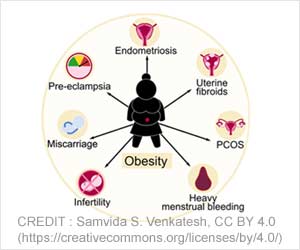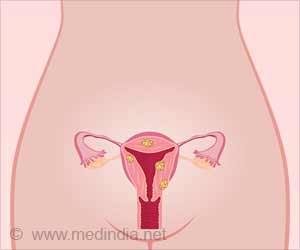- Uterine fibroids are the most common female genital tract tumors and the most prevalent reason for uterus removal surgery
- Researchers have revealed that genetic factors contribute to the susceptibility of uterine fibroids
- Understanding these genetic pathways may aid in developing novel therapeutics for uterine fibroids
What are Uterine Fibroids
Uterine fibroids are frequent uterine tumors that can be single or many, with diameters ranging from millimetres to more than 20 centimetres. Female sex hormones promote the growth of fibroids, which are nearly exclusively present in reproductive-age women. According to Oulu University Hospital gynaecologist Outi Uimari, fibroids can cause serious symptoms such as heavy or prolonged menstrual flow, pelvic pressure, decreased fertility, and pregnancy difficulties. “Since there is no curative medical treatment, fibroids with severe symptoms often lead to hysterectomy”, Uimari points out. Previous uterine fibroid genetic research has primarily focused on non-inherited somatic gene variants. However, according to the findings of a new study led by the University of Oulu, there are more than 70 places in the human genome that include heritable genetic changes that influence fibroid susceptibility. The researchers examined genetic and health registry data from 426,558 women from the FinnGen project as well as data from a previous fibroid study conducted in Europe.Genetic Variables Linked with Uterine Fibroids
Many of the susceptibility genes found, such as myocardin (MYOCD) and cyclin-dependent kinase inhibitor 1A (CDKN1A), govern smooth muscle cell division and differentiation. Overall, genetic variables that alter the biology of muscle tissue appear to be important determinants in fibroids: the researchers discovered that a hereditary proclivity to build muscle mass is responsible for a higher risk of fibroids.Metabolic Risk Factors and Uterine Fibroids
“This is unexpected because, in the light of previous studies, it has appeared that, rather than muscle mass, obesity and elevated blood lipid levels are linked with the risk of myomas”, says Ph.D. Eeva Sliz, the main analyst of the study. “Based on the genetic data, however, it seems that there is no causal relationship between these metabolic risk factors and fibroids, as there is between muscle mass and fibroids”, Sliz continues. The researchers note that genetically obtained natural muscle mass and acquired muscle mass are very different types of properties, and there is no need to quit gym training, for example, in fear of fibroids.Professor Johannes Kettunen from the University of Oulu emphasizes how valuable information biobank research provides. “The use of genetic and registry data stored in biobanks through the FinnGen project creates unique research opportunities and further for healthcare”, says Kettunen. “The results obtained here offer a new perspective on the molecular mechanisms causing fibroids, and once the understanding of the disease mechanisms accumulates, the information can be used in the development of new kinds of treatments in the future”, Kettunen continues.
Source-Medindia














